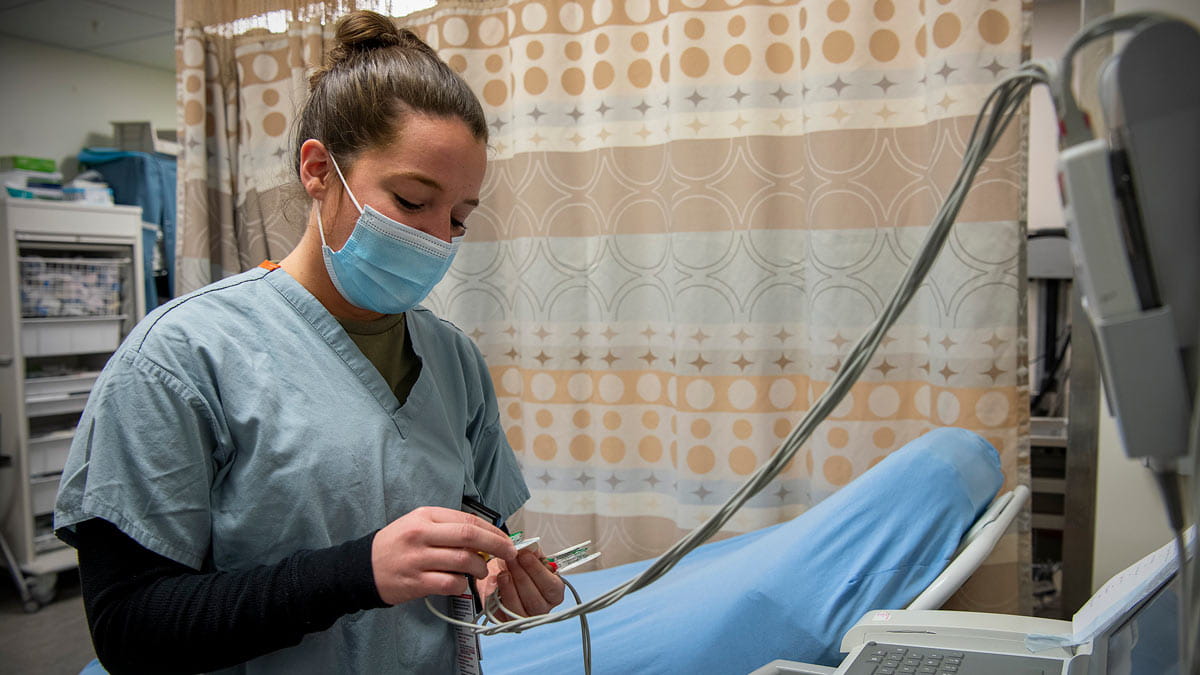How someone gets flesh-eating bacteria, and other FAQs about necrotizing fasciitis

Flesh-eating bacteria, or necrotizing fasciitis, may sound like something out of a horror movie, but it’s a real condition that can have dangerous outcomes if not detected and treated early. Below, infectious disease expert José Bazan, DO, answers frequently asked questions about this disease's warning signs and how it's treated. You can also read the remarkable story of how one of Ohio State’s patients survived necrotizing fasciitis here.
What is necrotizing fasciitis?
Necrotizing fasciitis is a rare but severe and rapidly progressive bacterial infection associated with significant damage and destruction of deep soft tissue structures such as muscle, connective tissues and fat. While necrotizing fasciitis can be caused by different types of bacteria depending on patient-specific risk factors, one of the most well-known bacterial pathogens associated with this infection is Streptococcus pyogenes, also known as Group A Streptococcus.
How does a person get it?
Patients who develop necrotizing fasciitis can have specific risk factors that allow bacteria to gain entry into the soft tissue spaces. These can include breaks in the skin or mucous membranes, penetrating injuries due to trauma, recent surgical procedures, immunosuppressive conditions and others. However, this infection can also occur in healthy individuals of any age and with no clear or obvious predisposing conditions.
What makes it so dangerous?
What makes necrotizing fasciitis so dangerous is that it progresses very rapidly (usually within hours) and can often trigger dangerous related conditions such as septic shock, multi-organ failure and loss of limbs, even when appropriate therapy and management is provided. Medical providers need to be acutely aware of patients who present with signs or symptoms that could point toward this life-threatening infection.
What are the symptoms?
Necrotizing fasciitis usually presents with tissue redness, swelling, severe pain or pain that’s out of proportion of physical exam findings, bruising, crepitus (abnormal popping or cracking sound in the joints and lungs) and fever. If you experience these symptoms, it’s important to seek emergency medical care as soon as possible.
Where is necrotizing fasciitis most commonly found?
The most common body sites where necrotizing fasciitis tends to occur are the extremities (arms, hands, feet and legs). However, necrotizing fasciitis can also occur in the head, neck and groin regions depending on the circumstances and risk factors.
How do you treat necrotizing fasciitis?
One of most important things is to recognize and make the diagnosis early and initiate treatment as quickly as possible. The treatment of necrotizing fasciitis involves aggressive surgical wound treatment, removal of the infected tissue, administration of appropriate antibiotics and general support of the patient to ensure appropriate blood, lung and heart function.
Can necrotizing fasciitis be cured?
Many factors can play into the final outcome of a patient with necrotizing fasciitis. As stated above, risk of death can remain high despite appropriate treatment. However, patients with this life-threatening infection can survive and be cured, particularly if the diagnosis is made early in the course of infection and the appropriate management strategies are implemented quickly.




